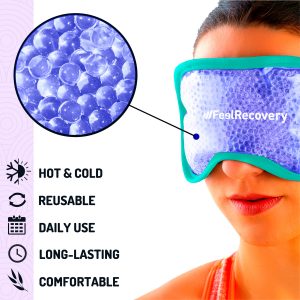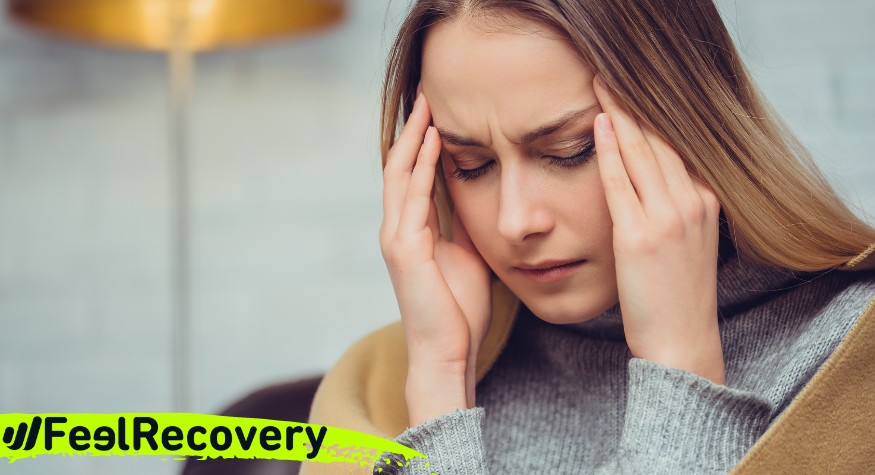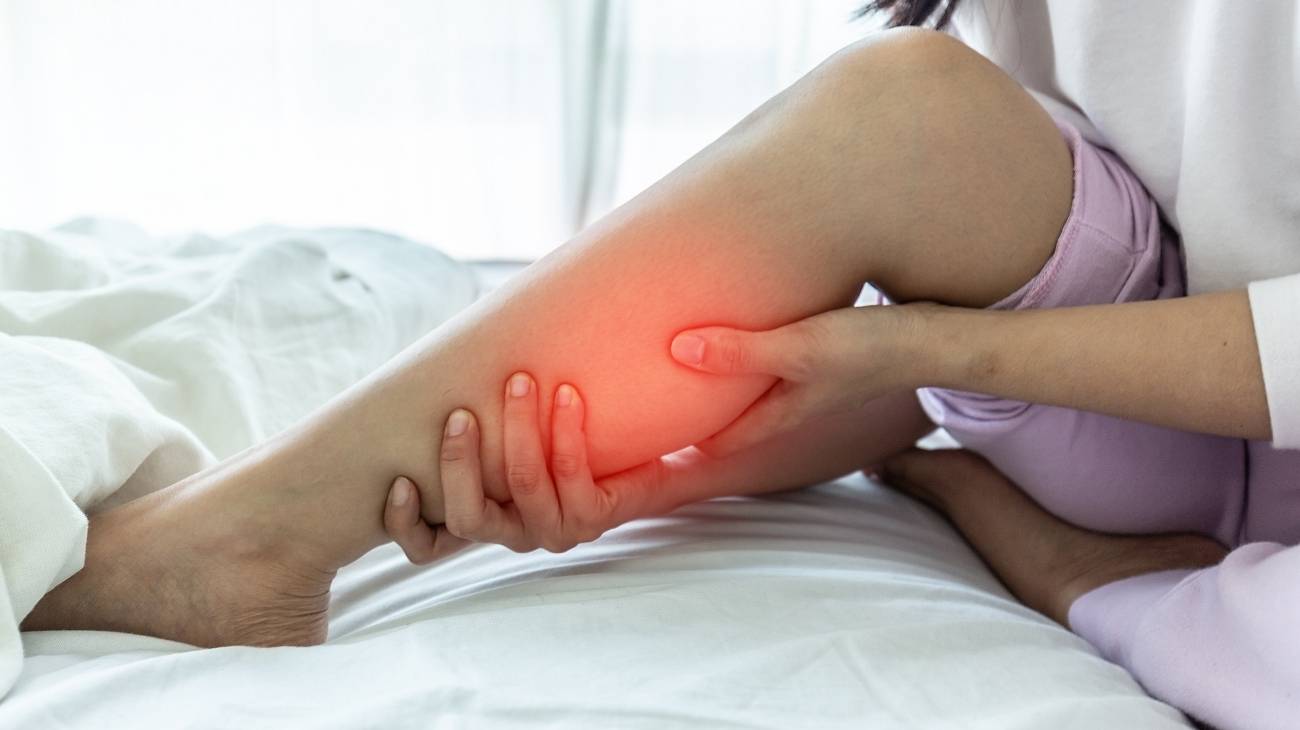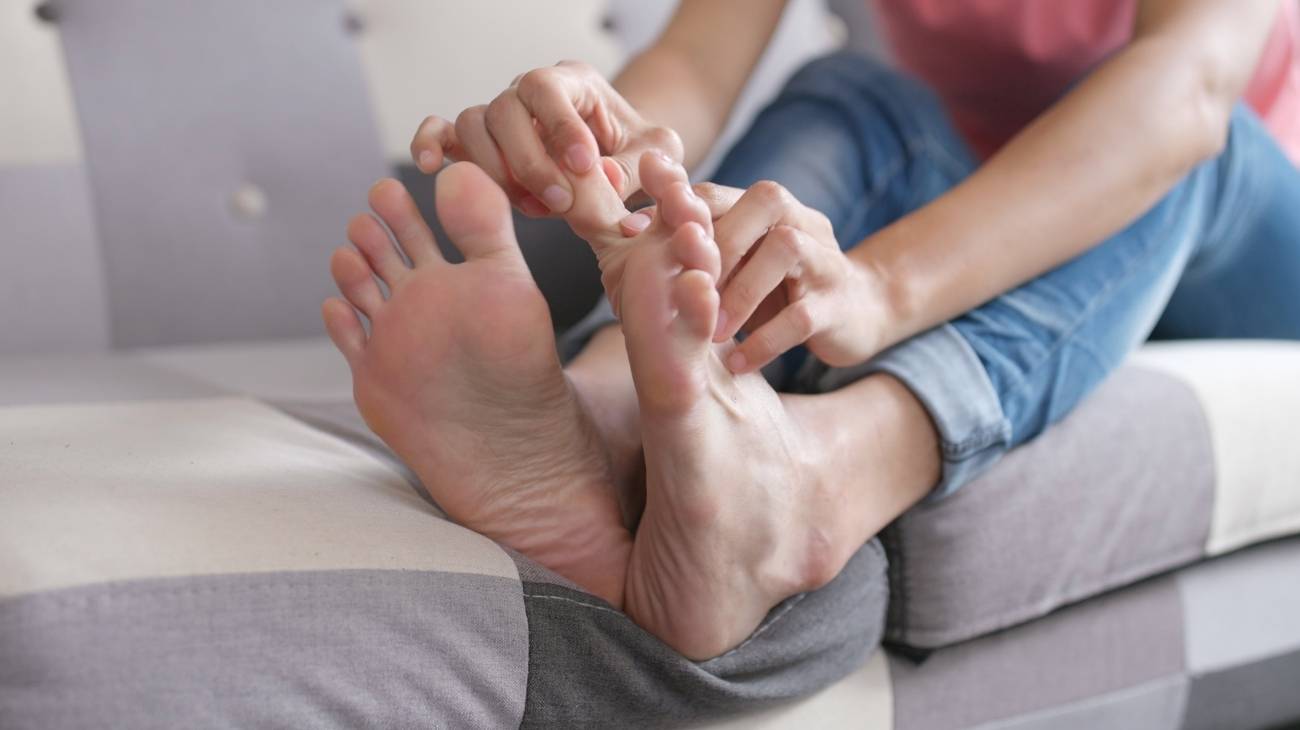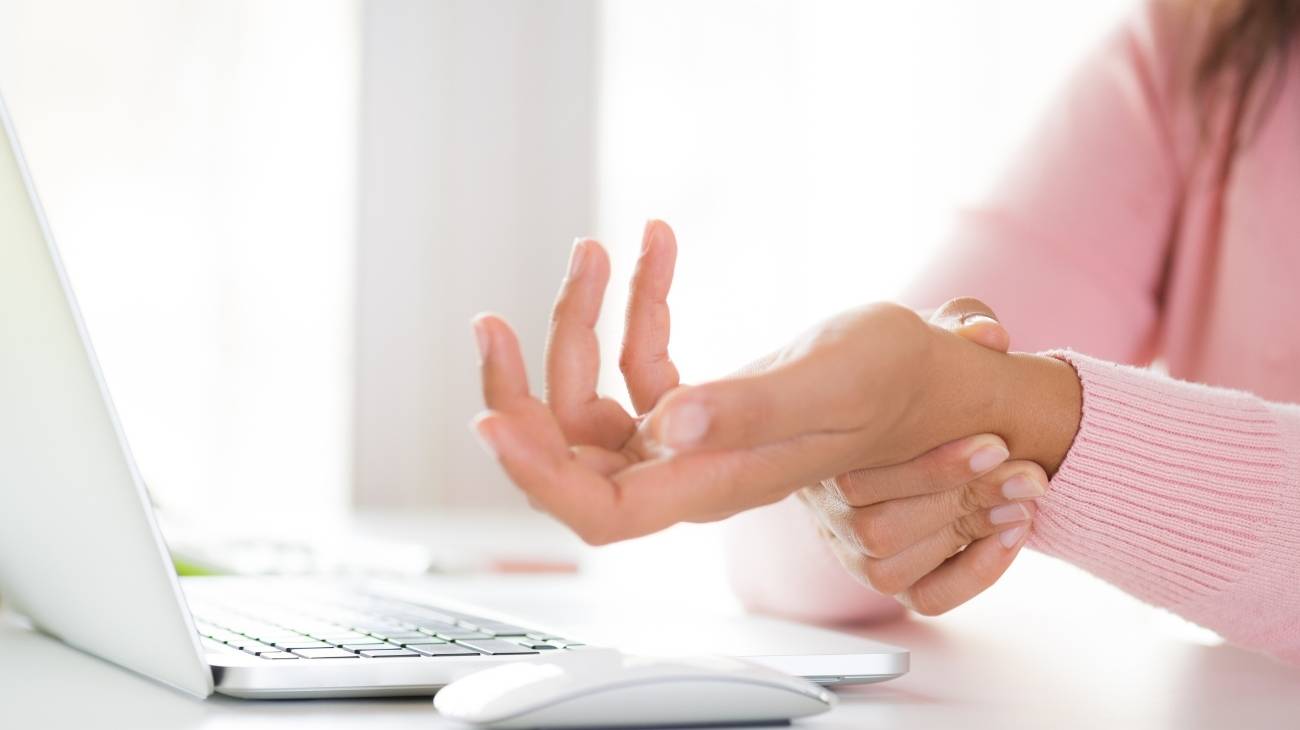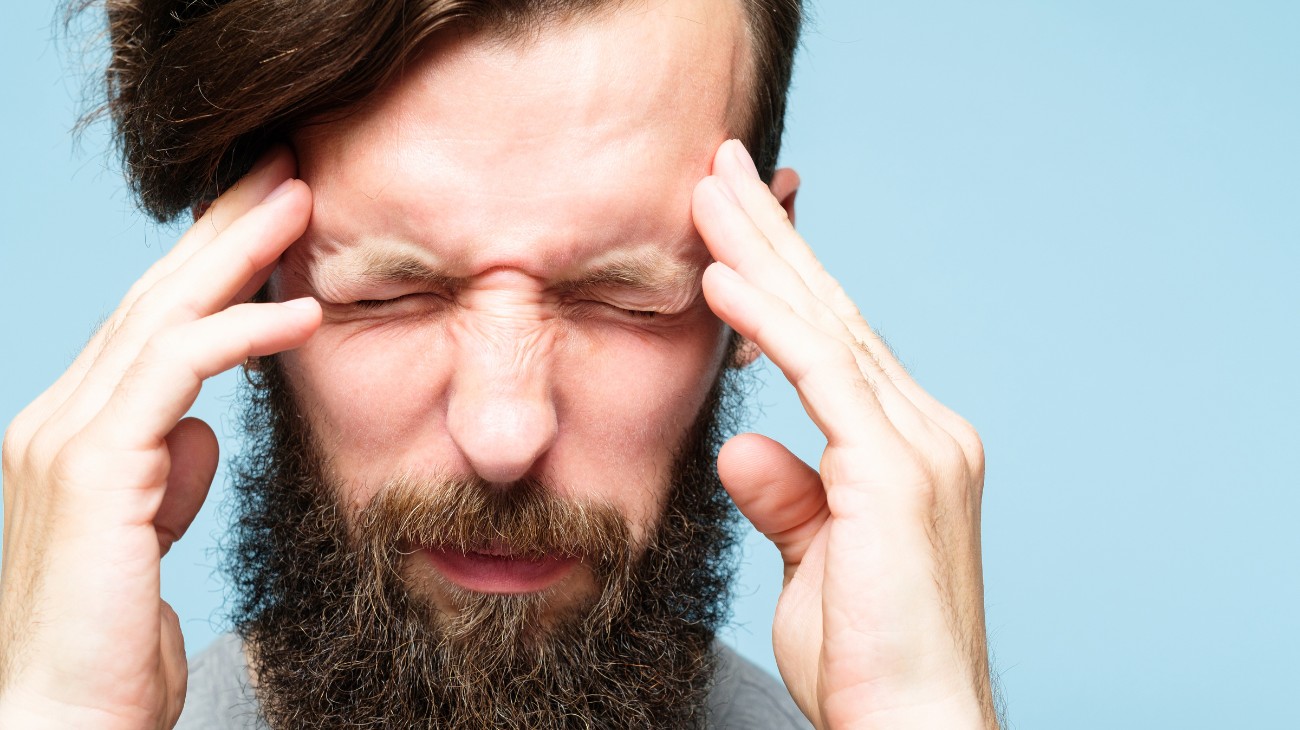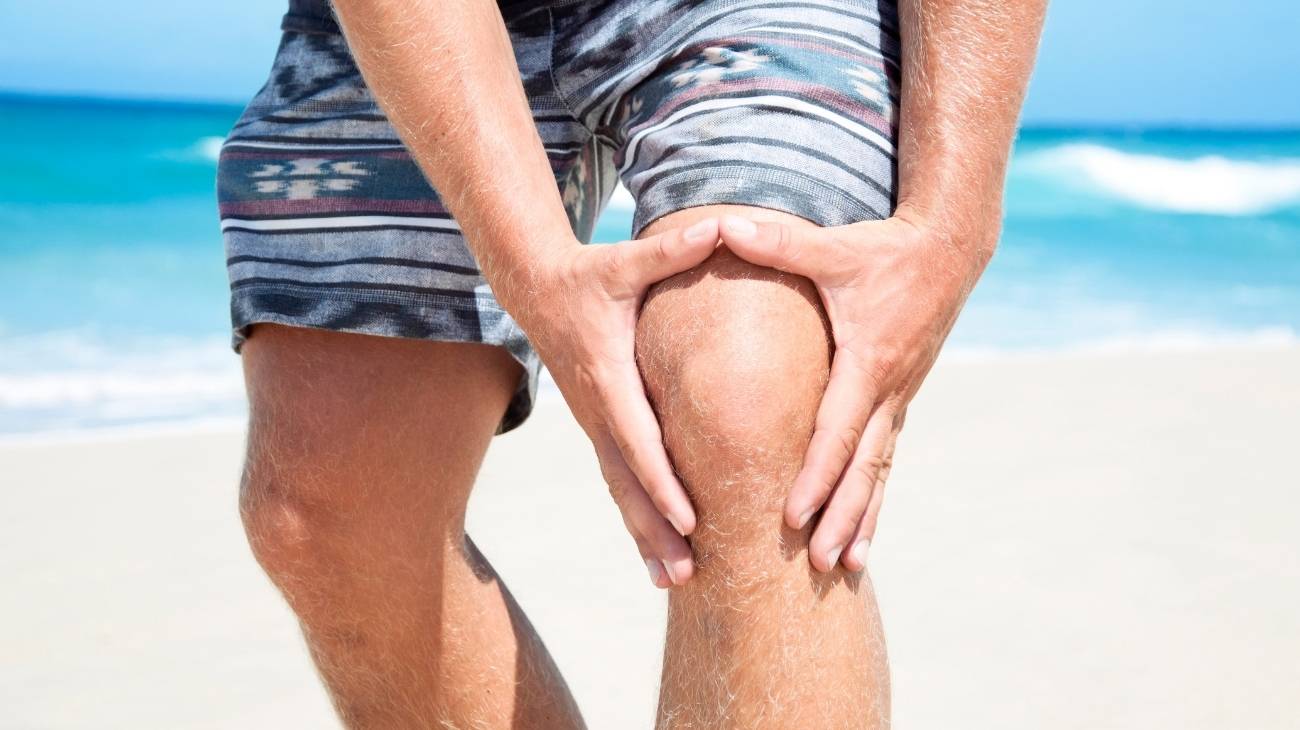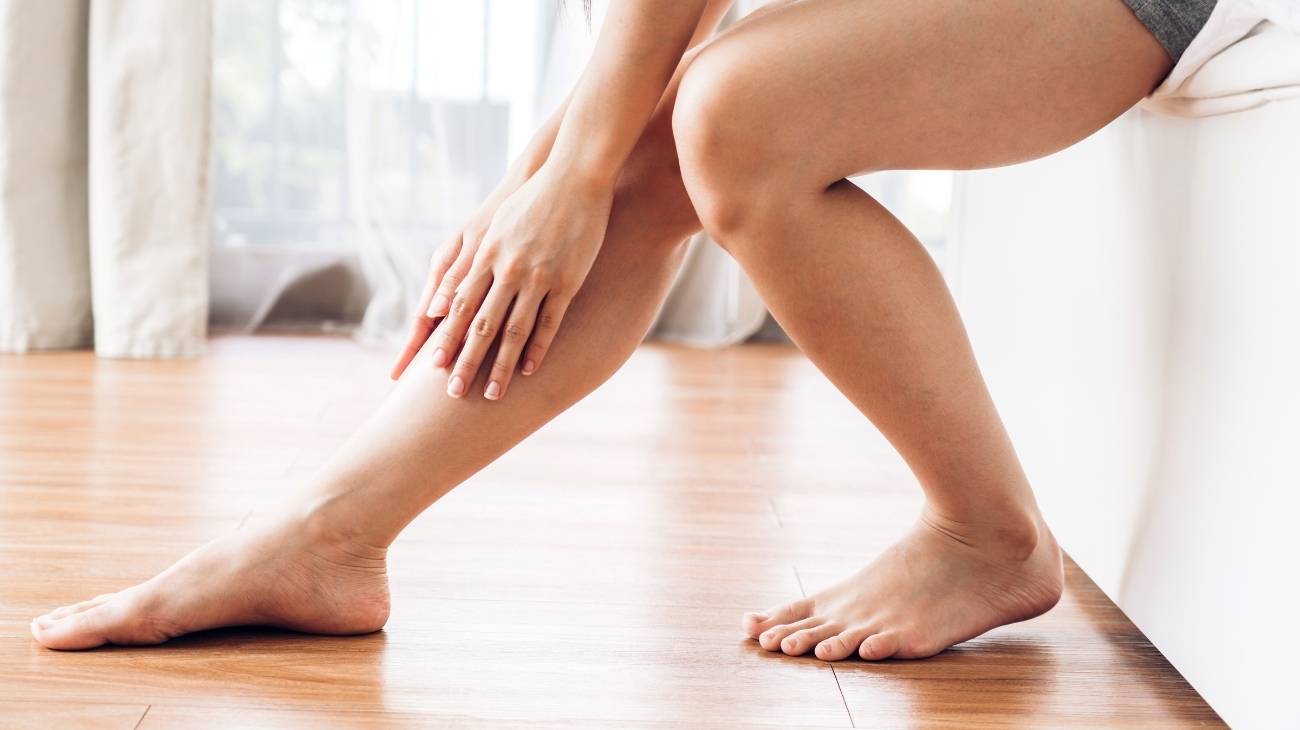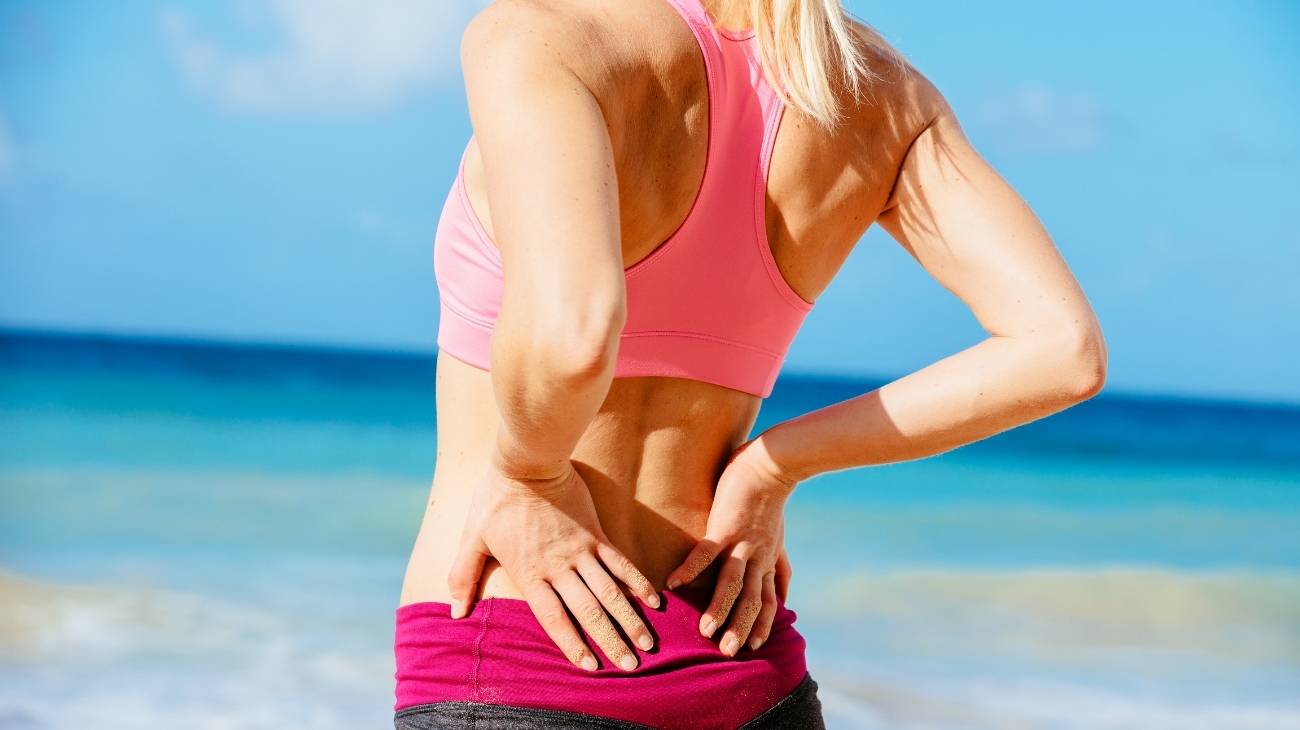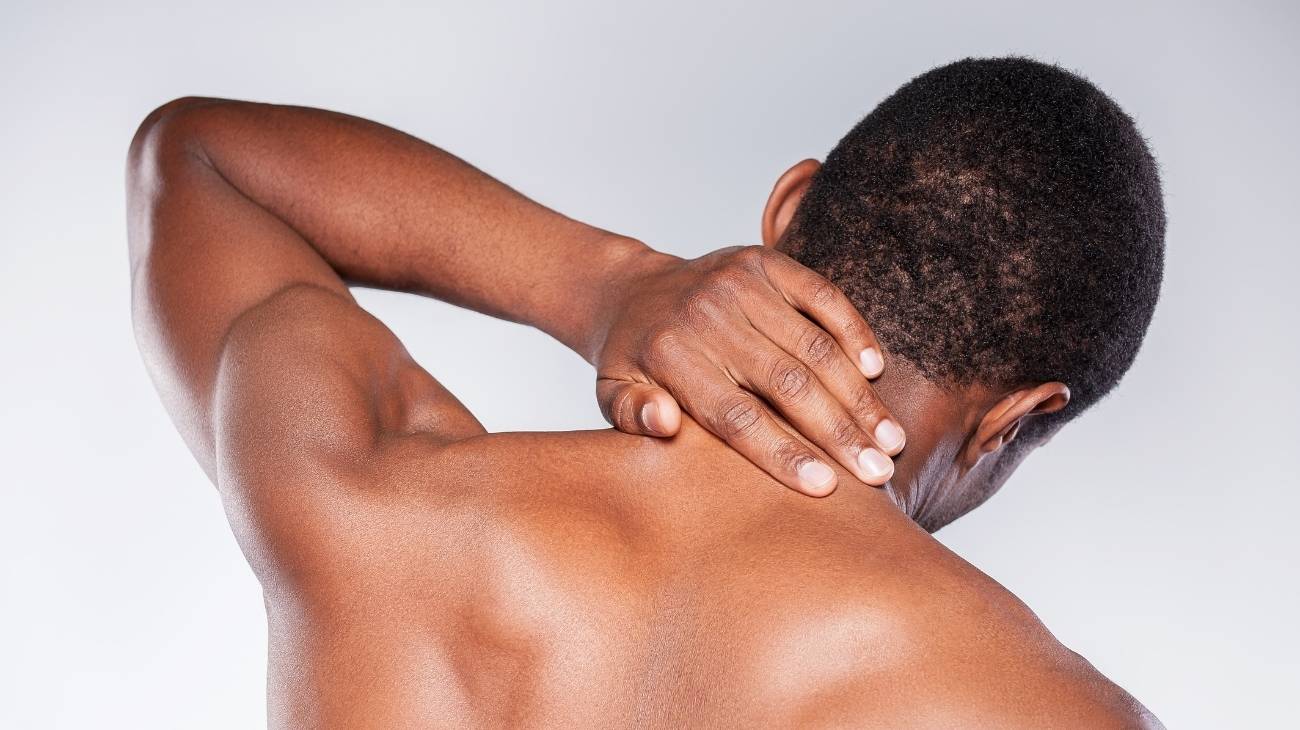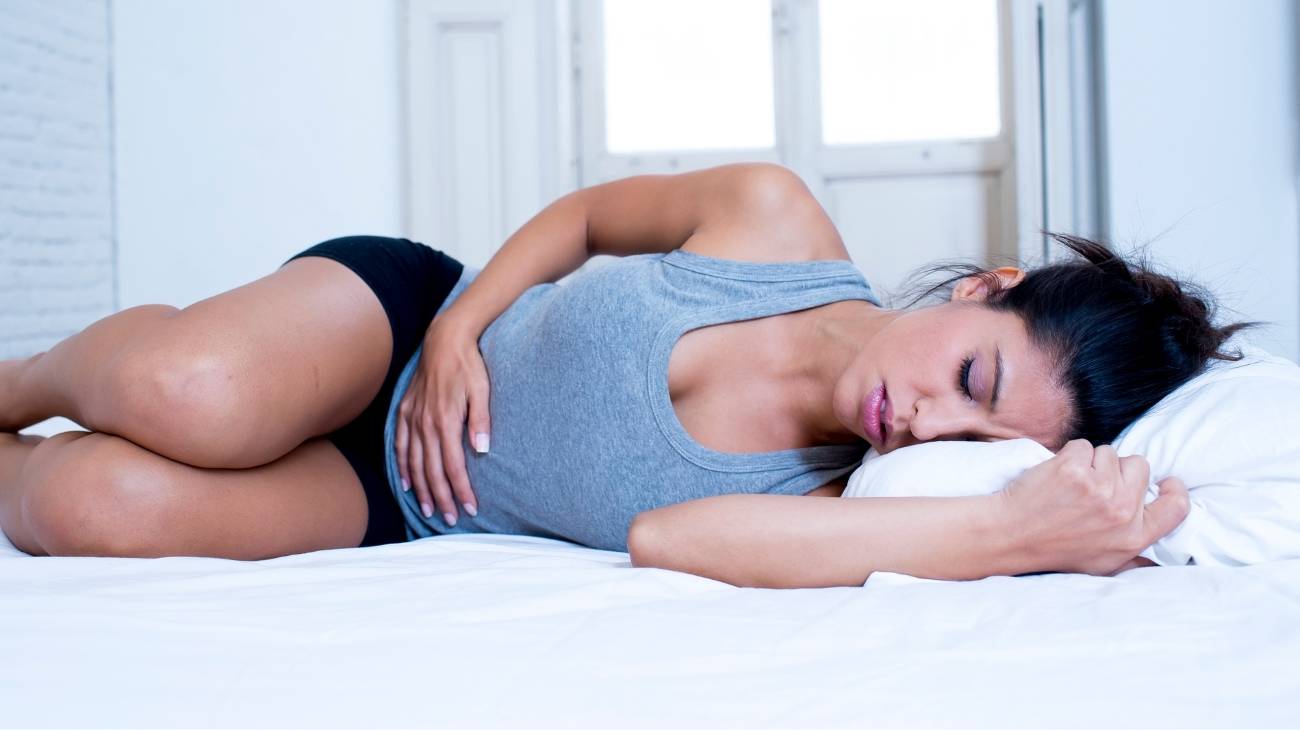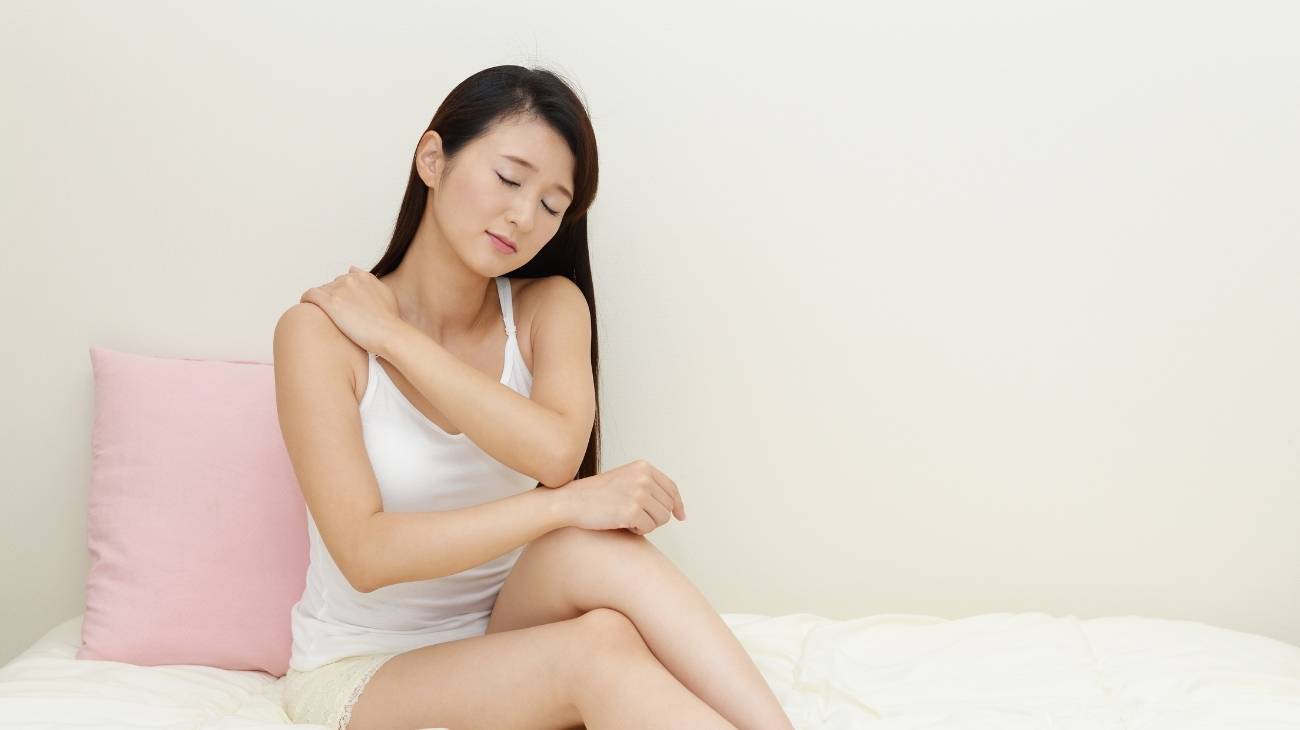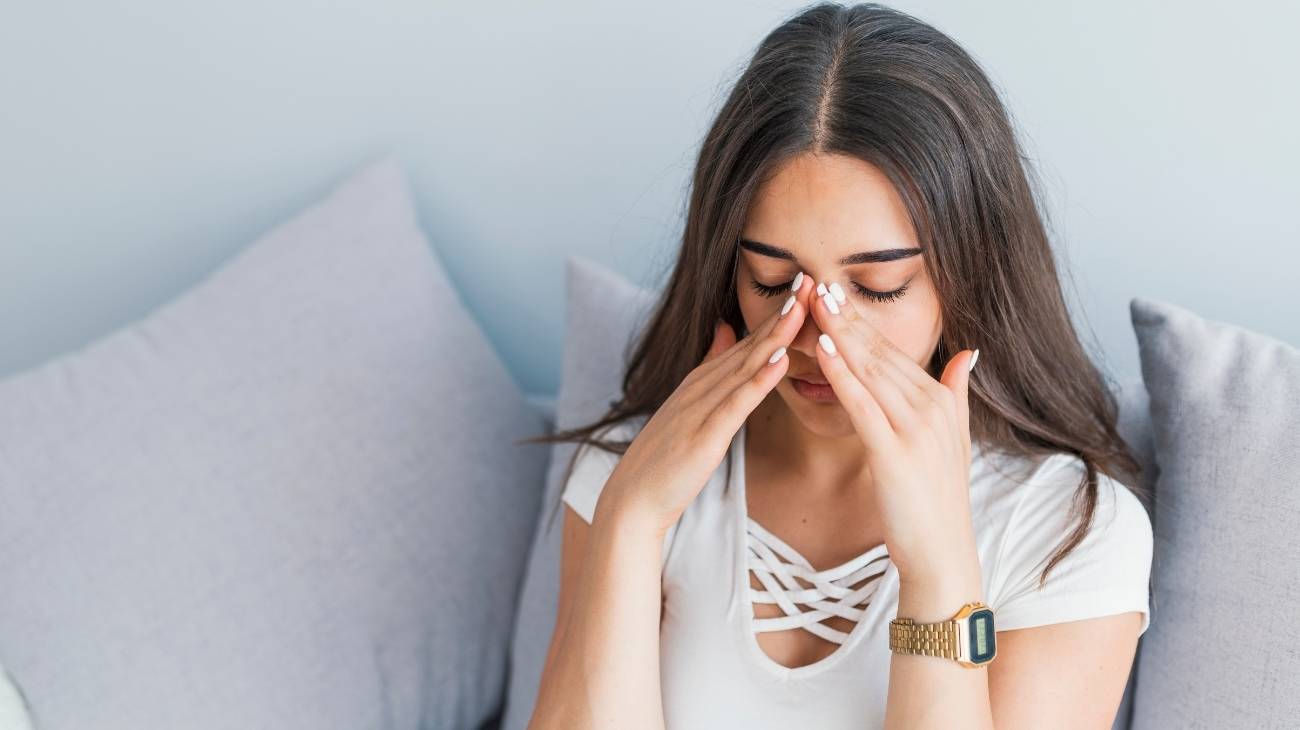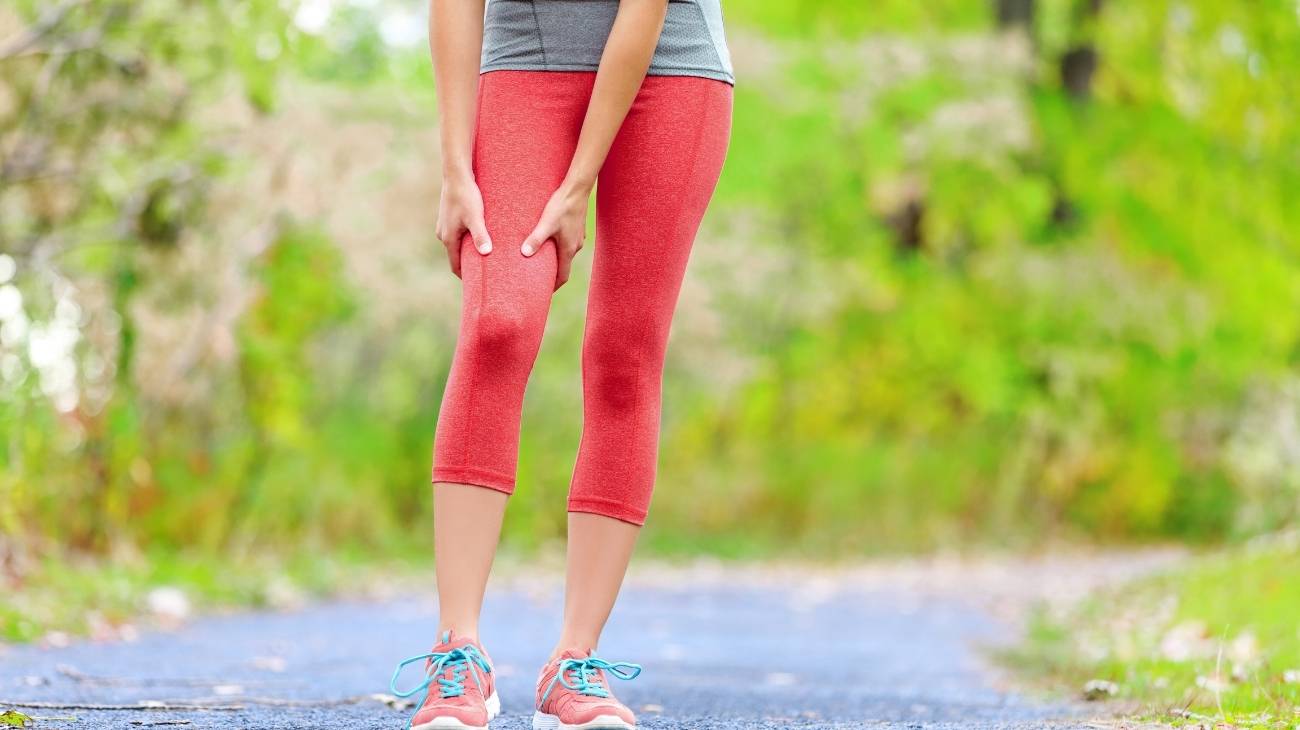Headaches are a common health problem that can significantly affect a person's quality of life. Knowing ways to reduce this pain is important for several reasons. First, headaches can be a symptom of an underlying health problem, such as migraines or tension headaches, which may require medical attention. Second, these untreated complaints can lead to increased stress, decreased productivity and difficulty performing daily activities.
Third, relying on painkillers long-term can have potential side effects and may not address the root cause. By knowing ways to relieve headache pain, individuals can learn to manage their symptoms effectively and improve their overall well-being. Non-pharmacological strategies, such as relaxation techniques, exercise and dietary changes, can be especially helpful in improving your overall health.
What is headache and how to identify it?
Headache is a common condition characterized by pain or discomfort in the head or neck region. It can range from a mild, dull ache to severe, debilitating pain that can interfere with daily activities. Headaches can be classified into different types based on their symptoms and underlying causes, such as tension headaches, migraine headaches, cluster headaches and sinusitis.
The symptoms of a headache can vary depending on the type of headache. The most common symptoms are pain or pressure in the forehead or neck region, sensitivity to light or sound, nausea, vomiting, dizziness, lightheadedness and fatigue. Some pain may also be accompanied by visual disturbances, such as flashing lights or blurred vision.
To correctly identify a headache, it is important to pay attention to the location and intensity of the pain, as well as any other accompanying symptoms. Keeping a symptom diary can be helpful in identifying patterns or triggers that may be contributing to headaches. If you experience frequent or severe pain, it is important to consult a healthcare professional for proper diagnosis and treatment.
Best products for headache relief
Bestseller
-
Acupressure Mat and Pillow (Black/Gray)
$49.95 -
Acupressure Mat and Pillow (Green/Navy)
$49.95 -
Acupressure Mat and Pillow (Pink/Bordeaux)
$49.95 -
Acupressure Pillow (Black/Gray)
$29.46 -
Acupressure Pillow (Green/Navy)
$29.46 -
Acupressure Pillow (Pink/Bordeaux)
$29.46 -
Gel Eye Mask for Puffy Eyes (Gold/Black)
$11.95 -
Gel Eye Mask for Puffy Eyes (Orange/Pink)
$11.95 -
Gel Eye Mask for Puffy Eyes (Purple/Turquoise)
$11.95 -
Microwave Heating Pad for Neck & Shoulder Pain Relief (Hearts)
$24.95 -
Microwave Heating Pad for Neck & Shoulder Pain Relief (Oxford)
$24.95 -
Microwave Heating Pad for Neck & Shoulder Pain Relief (Sport)
$24.95 -
Microwave Heating Pad for Neck Pain Relief (Hearts)
$19.95 -
Microwave Heating Pad for Neck Pain Relief (Oxford)
$19.95 -
Microwave Heating Pad for Neck Pain Relief (Sport)
$19.95
What causes headache pain?
They can have many different causes, and it is often important to identify the main cause to determine the most effective treatment. Some common causes are:
Primary headaches
- Cluster headaches: These are severe pains that occur in cyclical or cluster patterns, usually on one side of the head. They are usually accompanied by other symptoms, such as nasal congestion and tearing.
- Migraines: Migraines are a type of headache characterized by throbbing pain, often on one side of the head. They can be triggered by various factors such as stress, hormonal changes and certain foods.
- Tension headaches: These are the most common type of headache and are usually caused by muscle tension in the neck and shoulders.
- Trigeminal autonomic headache (TAC): Disorders characterized by strictly unilateral trigeminal pain distribution that occurs in association with ipsilateral cranial autonomic symptoms. This group includes cluster headache, paroxysmal hemicrania, and short-lasting unilateral neuralgiform headache attacks with conjunctival injection and lacrimation.
Secondary headaches
- Sinus: These headaches are caused by inflammation and pressure in the sinuses, often due to sinus infection or allergies.
- Medication overuse headaches: Taking painkillers or other headache medications too often or in high doses can cause rebound headaches.
- Caffeine withdrawal: Abruptly reducing or stopping caffeine intake can cause pain as a withdrawal symptom.
- Referred pain: Pain in other areas of the body, such as the neck or jaw, can sometimes be perceived as pain in the head.
- Sleep disorders: Sleep apnea, snoring and other sleep disorders can cause pain, especially in the morning.
- Dehydration: Not drinking enough water can lead to dehydration, which can cause headaches as a symptom.
- Brain tumors: Although rare, brain tumors can cause headaches as a symptom, especially if they are located in certain areas of the brain.
- Giant cell arteritis: This is an inflammatory disease that affects blood vessels in the head and neck, and can cause severe pain, among other symptoms.
- Temporomandibular joint (TMJ) disorders: Dysfunction of the joint that connects the jaw to the skull can cause discomfort, especially in the temple region.
- Carbon monoxide poisoning: Exposure to high levels of carbon monoxide, a toxic gas, can cause pain as a symptom, along with other symptoms such as dizziness and nausea.
- Glaucoma: This eye condition can be another cause, especially if it is not properly controlled and causes increased pressure in the eye.
- Hangover: Alcohol is a diuretic, which means that it increases urine production and can cause fluid loss and electrolyte imbalances in the body. This can cause dehydration.
- Dental problems: Dental problems such as cavities, abscesses and gum disease can be another cause.
- Infections: Certain infections such as meningitis and encephalitis can cause headaches as a symptom, along with other neurological symptoms.
- High blood pressure: Hy pertension is a common cause of headaches, especially in the back of the head.
Post-traumatic headaches
- Head or neck trauma: Any type of head or neck injury can cause post-traumatic headaches. This may be blunt force trauma, such as a blow to the skull, or whiplash from a car accident.
- Inflammation or irritation of cranial nerves or blood vessels: Injuries to the head or neck can cause inflammation or irritation of the nerves or blood vessels in these areas, which can cause certain symptoms.
- Changes in the levels of certain brain chemicals, such as serotonin or norepinephrine, due to the injury: Traumatic brain injuries can upset the normal balance of brain chemicals.
- Post-traumatic stress disorder (PTSD) or other emotional disorders related to the injury: The emotional stress and trauma of a head injury can trigger or exacerbate pain.
- Sleep disturbances, such as insomnia or sleep apnea: Sleep problems are common after head injury and may contribute to the development or worsening of headaches.
- Hormonal changes, such as those associated with menstruation or menopause: Hormonal changes can affect the severity and frequency of headaches, particularly migraine and tension headaches.
What are the best ways to relieve and prevent headaches?
| Prevention methods | Pain relief methods |
|---|---|
| Practice relaxation | Heating pads or hot compresses |
| Trying B vitamins | Massage |
| Limiting alcohol consumption | Drinking caffeinated tea or coffee |
| Trying essential oils | Taking medications in moderation |
| Try acupuncture | Taking coenzyme Q10 |
| Avoid foods rich in histamine | Dim artificial lights |
| Avoid strong odors | Take ginger |
| Get enough sleep | Relieve pressure on scalp or head |
| Take magnesium | Try an herbal remedy |
| Try an elimination diet | Try not to chew too much |
| Drink water | Cold compresses |
| Avoid nitrates and nitrites | Over-the-counter pain relievers |
| Exercise regularly | Call your doctor when necessary |
1 - Relaxation
Relaxation can help relieve associated symptoms by reducing muscle tension and promoting a sense of calm throughout the body. When the body experiences stress, tension can build up in the muscles and blood vessels of the head and neck, causing discomfort and pain. Relaxation techniques such as deep breathing, meditation and yoga can help release this tension, improving circulation and reducing the severity of symptoms.
In addition, relaxation techniques have been shown to reduce stress and anxiety, which are common triggers. Stress and anxiety can lead to increased muscle tension and changes in blood flow, which can contribute to increased headache pain. By practicing relaxation techniques, individuals can reduce their overall stress levels, potentially preventing symptoms from worsening.
2 - Vitamin B complex
B vitamins play a crucial role in maintaining the health and functioning of the nervous system. Specifically, vitamin B2 (riboflavin) has been shown to have a beneficial effect on headaches. Riboflavin helps improve energy production within the brain, reducing the likelihood of developing pain due to metabolic imbalances.
In addition, vitamin B6 (pyridoxine) helps regulate the production of neurotransmitters such as serotonin, which are involved in pain perception and mood regulation. Low levels of serotonin have been linked to an increased risk of headaches, so maintaining adequate levels of vitamin B6 can help prevent them.
3 - Limit alcohol
Limiting alcohol consumption can help alleviate associated symptoms, as alcohol can have a dehydrating effect on the body. Dehydration can cause a reduction in blood volume, which can cause blood vessels in the brain to constrict. Alcohol can also increase blood flow to the brain, causing a temporary dilation of the blood vessels. This dilation can cause a feeling of pressure or pain, which may be experienced as a headache.
In addition, alcohol can disrupt sleep patterns, which can also be a trigger for pain. Sleep is crucial for the body to repair and recharge, and disruptions in the sleep cycle can increase the likelihood of certain pathologies.
4 - Try essential oils
Essential oils can help alleviate symptoms due to their ability to promote relaxation and reduce inflammation. For example, peppermint oil has been shown to have a cooling and soothing effect on the skin, which can help relieve tension headaches. Lavender oil has also been shown to have a calming effect, reducing feelings of stress and anxiety.
In addition, some essential oils contain compounds with anti-inflammatory properties, such as ginger oil, which can help reduce inflammation in the body, potentially reducing the severity of symptoms. It is important to note that essential oils should be used with caution, as some people may be sensitive or allergic to certain oils.
5 - Try acupuncture
Acupuncture can help relieve symptoms associated with headaches by stimulating specific points on the body, known as acupoints or acupuncture points. By stimulating these points, acupuncture can help release muscle tension and improve circulation, which can reduce the severity of symptoms.
In addition, acupuncture has been shown to have a beneficial effect on the nervous system, helping to regulate the release of neurotransmitters such as serotonin and endorphins, which can help relieve pain and improve mood.
Acupuncture has been found to be especially effective for tension headaches and migraines, two of the most common types of headaches. It is important to note that acupuncture should only be performed by a trained acupuncturist, and individuals should consult with a health care professional before pursuing acupuncture as a treatment.
6 - Avoid histamine-rich foods
Histamine is a chemical that the body produces naturally in response to allergens or other triggers, but it can also be present in certain foods. In people sensitive to histamine, consumption of foods rich in this compound can cause discomfort, among other symptoms.
Foods rich in histamine include aged cheeses, fermented foods, smoked meats and alcohol. By avoiding these foods, people can reduce the frequency and severity of symptoms.
7 - Avoid strong odors
This is particularly true for migraine sufferers, as sensitivity to odors is a common symptom of this type of headache. Strong odors, such as perfumes, cigarette smoke and chemical fumes, can activate sensory receptors in the nose and trigger the release of chemicals in the body, such as histamine, which can cause inflammation and pain.
In addition, the brain may interpret certain odors as a threat or irritant, triggering a headache response. Avoiding strong odors can be an effective way to control and prevent symptoms, especially for people prone to migraines.
8 - Heating Pads or Hot Packs
The use of a heating pad or hot compress promotes muscle relaxation and improves blood flow to the affected area. Heat therapy has been shown to be especially effective for tension headaches, which are often caused by muscle tension in the neck and shoulders.
Applying heat to the affected area can help relax the muscles and reduce the tightness and stiffness that can contribute to the above symptoms. Heat can also help dilate blood vessels, increasing blood flow to the area and promoting the delivery of oxygen and nutrients to the affected tissues.
9 - Massage
Massage can help reduce muscle tension and improve blood flow to the affected area. Tension headaches, which are the most common type of headache, are often caused by muscle tension in the neck and shoulders, and massage can help release this tension and promote relaxation.
Massage can also help improve blood flow to the affected area, which can help reduce inflammation and promote the delivery of oxygen and nutrients to the affected tissues. In addition, massage has been shown to have a beneficial effect on the nervous system, promoting the release of endorphins and other neurotransmitters that can help relieve pain and improve mood.
10 - Drinking caffeinated tea or coffee
Drinking caffeinated tea or coffee helps constrict blood vessels in the brain and reduce inflammation. Caffeine is a natural vasoconstrictor, which means it can constrict blood vessels in the brain and reduce blood flow to the affected area, which can help relieve pain.
Caffeine can also help reduce inflammation, which can contribute to headache symptoms. Inflammation is a natural response to injury or infection, but chronic inflammation can contribute to a variety of health problems, including headaches. Caffeine has been shown to have anti-inflammatory effects, which may contribute to its ability to relieve symptoms.
11 - Dim the lights
Dimming the lights reduces the amount of visual stimulation the brain has to process. Bright or flashing lights can be a common trigger for headaches, especially in light-sensitive people.
Reducing the amount of light in the environment can help reduce the strain on the eyes and brain, and may help alleviate symptoms. In addition, lowering the intensity of lights can promote relaxation and a sense of calm, which can be beneficial for people who experience ongoing headaches.
12 - Take coenzyme Q10
Coenzyme Q10, also known as CoQ10, is a natural antioxidant that plays an important role in energy production in the body. It has been shown to have a beneficial effect on the cardiovascular system, and may also be effective in reducing the frequency and severity of various aches and pains.
Research has suggested that CoQ10 may help reduce inflammation and oxidative stress in the brain. It may also help improve mitochondrial function and energy production, which may be beneficial for migraine sufferers.
13 - Take medication in moderation
Using medication in moderation is vital to minimize the risk of possible side effects or headaches from medication overuse. Overuse of certain medications, such as over-the-counter pain relievers or prescription migraine medications, can worsen symptoms and lead to more frequent headaches.
Using medication only as directed by a physician and limiting its use to what is strictly necessary can help reduce the risk of overuse headaches and other adverse effects. In addition, the use of non-pharmacological strategies, such as relaxation techniques or lifestyle changes, can help reduce the frequency and severity of these pains and even replace the need for medication.
14 - Sleep well
Getting enough sleep is an important factor in maintaining overall health and well-being, and can also be beneficial in relieving certain aches and pains. Lack of sleep or poor quality sleep can contribute to the development or worsening of the symptoms mentioned above.
Sleep plays a key role in regulating various bodily processes, such as inflammation and pain perception, which are closely related to headache symptoms. In addition, sleep disturbances can lead to changes in neurotransmitter levels in the brain, which can trigger headaches.
Getting enough sleep and maintaining a consistent sleep schedule can help reduce the frequency and severity of headaches. It is recommended that adults get 7 to 9 hours of sleep per night to promote overall health and reduce the risk of disease.
15 - Take some ginger
Ginger has been shown to have anti-inflammatory and analgesic properties, which can make it effective in relieving certain pathologies. It contains compounds called gingerols and shogaols that have been shown to inhibit the production of inflammatory substances in the body and reduce pain. In addition to its anti-inflammatory properties, ginger has also been shown to help relieve nausea and vomiting, common symptoms associated with some types of headaches, such as migraines.
Ginger can be consumed in various forms, such as fresh ginger, ginger tea, and ginger supplements. It is important to note that while ginger is generally safe for most people, it can interact with certain medications and may not be suitable for everyone.
16 - Relieve pressure on the scalp or head
Applying gentle pressure or massaging the scalp can help relieve tension headaches. Tension headaches are the most common type of pain in our head and are usually caused by muscle tension in the neck, shoulders and scalp. Applying gentle pressure or massage to these areas can help release tension.
One technique that can be effective is acupressure, which involves applying pressure to specific points on the head, neck and shoulders. This can help stimulate the release of endorphins, which are natural painkillers produced by the body.
17 - Take magnesium
Magnesium is an essential mineral that plays a crucial role in many bodily functions, such as muscle and nerve function, blood pressure regulation and blood sugar control. Research has shown that magnesium supplements can be effective in preventing and treating certain pains, especially migraines.
Migraines are often associated with changes in blood flow and the release of certain neurotransmitters. Magnesium has been shown to help regulate these processes and may also have a calming effect on the nervous system, which may help reduce the frequency and severity of migraines.
18 - Try not to chew excessively
Chewing, especially gum, can cause tension in the muscles of the jaw and head, which can contribute to the onset of pain. This is because excessive chewing can cause muscle overload and tension, leading to tension headaches.
In addition, the constant movement of the jaw during chewing can increase the production of saliva and digestive enzymes, which can also contribute to the onset of headaches. To avoid exacerbating tension headaches or triggering new pain, it may be helpful to avoid excessive chewing, especially gum.
19 - Try an herbal remedy
Medicinal herbs have been used for centuries to relieve headaches. Some herbs, such as feverfew and butterbur, are believed to have anti-inflammatory and analgesic properties that may help reduce symptoms. In addition, herbs such as peppermint and lavender have calming and relaxing properties that may help relieve tension headaches.
However, it is important to keep in mind that not all herbal remedies are safe or effective for everyone, and some may interact with other medications. It is important to consult a health care professional before trying any new herbal remedy.
20 - Try an elimination diet
A cleansing diet can help because certain foods can trigger pain in some people. By eliminating possible triggers from the diet, it may be possible to identify which foods cause the pains and avoid them in the future. Common triggers include alcohol, caffeine, chocolate, cheese, processed meats, and foods containing monosodium glutamate or nitrites.
Elimination diets consist of eliminating these potential triggers from the diet for a period of time, usually a few weeks, and then reintroducing them gradually, one at a time, while monitoring for any pain symptoms. This process can help identify trigger foods and reduce the frequency and intensity of headaches. However, it is important to consult a healthcare professional before starting an elimination diet to ensure that all nutritional needs are met.
21 - Drink water
Dehydration is a common cause of headaches, and drinking water can help relieve headaches. When the body is dehydrated, the brain can temporarily shrink or contract, which can separate from the skull and cause pain. In addition, dehydration can cause a decrease in blood volume and blood flow to the brain.
Drinking water rehydrates the body and increases blood flow to the brain, which can relieve pain. It is important to note that while drinking water can help prevent dehydration, it may not be effective for headaches caused by other factors, such as tension or migraine.
22 - Cold packs
A cold compress or ice pack can be an effective way to relieve migraine headaches. Applying a cold compress to the affected area can help reduce swelling and constrict blood vessels, which in turn can help relieve pain. This method is especially useful for tension headaches, migraines and cluster headaches.
The cold temperature of the compress can also help numb the pain receptors in the area, which provides additional pain relief. However, it is important to note that using ice packs for too long or applying them directly to the skin can damage the tissues and should be avoided.
It is recommended to wrap the cold pack in a towel or cloth before applying it to the affected area, and use it for no more than 15-20 minutes at a time. If you experience any adverse effects or the pain persists, it is important to see a doctor.
23 - Avoid nitrates and nitrites
Nitrates and nitrites are preservatives found in many processed meats, such as bacon, hot dogs and sausages. These chemicals can dilate blood vessels and cause pain, especially in people who are sensitive to them. Therefore, avoiding foods rich in nitrates and nitrites can help prevent headaches.
It should also be noted that other foods, such as aged cheese and red wine, contain natural compounds that can trigger pain in some people. Therefore, keeping a food diary and identifying possible triggers can be helpful for frequent pain sufferers.
24 - Exercise regularly
Physical exercise can help relieve headaches by reducing stress and tension in the body. Exercise increases blood flow and oxygen to the brain. Exercise also releases endorphins, which are natural painkillers that can help relieve aches and pains. In addition, regular exercise can improve sleep quality, reduce anxiety and depression, and improve overall health, all of which can help reduce the frequency and intensity of aches and pains.
However, it is important to keep in mind that some types of exercise, such as high-intensity workouts, can trigger headaches in some people. It is important to listen to your body and choose the right exercise for your physical condition and pain triggers. As with any illness, it is always best to consult a healthcare professional before starting a new exercise routine.
25 - Over-the-counter pain relievers
Over-the-counter pain relievers, such as aspirin, ibuprofen or acetaminophen, can help relieve headaches by reducing inflammation, blocking pain signals and relaxing tight muscles in the head and neck. In general, these medications are considered safe and effective for occasional use, but it is important to follow label instructions and not exceed the recommended dosage.
Overuse of pain relievers can lead to rebound headaches or medication overuse headaches, which can be more difficult to treat. It is also important to talk to a doctor before taking these medications if you have certain medical conditions or are taking other medications, as they can interact with other drugs and cause side effects. It is always best to work with a healthcare professional to determine the best course of treatment for your individual needs.
26 - Call your doctor
While many headaches can be treated with self-care strategies, there are times when it is important to seek medical attention. If a headache is severe, sudden or accompanied by other symptoms such as confusion, vision changes or slurred speech, it may be a sign of a more serious underlying condition, such as a stroke or brain hemorrhage.
In addition, if these discomforts are frequent or interfere with daily activities, they may be a sign of a chronic condition, such as migraine or tension headaches. A physician can perform a thorough evaluation, including a physical examination and possibly imaging tests, to determine the cause and develop an appropriate treatment plan. It is important not to ignore persistent or severe pain and to seek medical attention if necessary.
What are the best complementary or alternative therapies to reduce headaches?
There are several complementary and alternative therapies that can help reduce headache pain. Some of the most commonly used are
- Acupuncture: This traditional Chinese medicine technique involves the insertion of fine needles into specific points on the body. It is believed to stimulate the body's natural healing abilities and reduce pain.
- Chiropractic: Chiropractic treatment involves manipulation of the spine and other joints of the body to improve alignment and reduce pain. It can be helpful for certain types of headaches, such as those caused by tension or misalignment.
- Mind-body techniques: Practices such as meditation, yoga and tai chi can help reduce stress and promote relaxation, which in turn can help reduce pain.
- Biofeedback: This therapy involves learning to control certain bodily functions, such as heart rate and muscle tension, through relaxation techniques and monitoring devices. It can help reduce stress and tension, which can trigger discomfort.
- Yoga: This ancient practice includes physical postures, breathing techniques and meditation to promote relaxation and reduce stress, which can help relieve migraine headaches.
- Massage therapy: Massage can help reduce tension and promote relaxation, which can help relieve headache pain. Techniques such as Swedish massage, deep tissue massage and trigger point therapy can be effective.
- Cognitive behavioral therapy (CBT): This therapy involves identifying and changing negative thought patterns and behaviors that may contribute to stress and tension, which can trigger migraines or headaches.
- Aromatherapy: This therapy involves using essential oils to promote relaxation and reduce stress, which can help relieve pain.
- Medicinal herbs: Certain herbs, such as feverfew, butterbur and ginger, have been traditionally used to help reduce headache pain. They can be taken in supplement form or consumed in herbal teas or foods.
- CBD (cannabidiol): CBD interacts with the body's endocannabinoid system, which is involved in pain perception and inflammation. Some studies have found that CBD can reduce the frequency and severity of migraines and tension headaches. However, more research is needed to fully understand the efficacy of CBD in the treatment of headaches and to determine optimal dosages and methods of administration.
References
- Rasmussen, B. K. (1995). Epidemiology of headache. Cephalalgia, 15(1), 44-67. https://journals.sagepub.com/doi/abs/10.1046/j.1468-2982.1995.1501045.x
- Silberstein, S. D. (2018). Headache in clinical practice. Routledge. https://books.google.es/books?hl=en&lr=&id=9UtaDwAAQBAJ
- Stovner, L. J., Hagen, K., Jensen, R., Katsarava, Z., Lipton, R. B., Scher, A. I., ... & Zwart, J. A. (2007). The global burden of headache: a documentation of headache prevalence and disability worldwide. Cephalalgia, 27(3), 193-210. https://journals.sagepub.com/doi/pdf/10.1111/j.1468-2982.2007.01288.x
- Headache Classification Committee of the International Headache Society (IHS). (2013). The international classification of headache disorders, (beta version). Cephalalgia, 33(9), 629-808. https://journals.sagepub.com/doi/pdf/10.1177/0333102413485658
- Biondi, D. M. (2005). Physical treatments for headache: a structured review. Headache: The Journal of Head and Face Pain, 45(6), 738-746. https://headachejournal.onlinelibrary.wiley.com/doi/abs/10.1111/j.1526-4610.2005.05141.x
- Nestoriuc, Y., Martin, A., Rief, W., & Andrasik, F. (2008). Biofeedback treatment for headache disorders: a comprehensive efficacy review. Applied psychophysiology and biofeedback, 33, 125-140. https://link.springer.com/article/10.1007/s10484-008-9060-3
- Rains, J. C., & Poceta, J. S. (2006). Headache and sleep disorders: review and clinical implications for headache management. Headache: The Journal of Head and Face Pain, 46(9), 1344-1363. https://headachejournal.onlinelibrary.wiley.com/doi/abs/10.1111/j.1526-4610.2006.00578.x
- Fumal, A., & Schoenen, J. (2008). Tension-type headache: current research and clinical management. The Lancet Neurology, 7(1), 70-83. https://www.sciencedirect.com/science/article/abs/pii/S1474442207703253
- May, A. (2005). Cluster headache: pathogenesis, diagnosis, and management. The Lancet, 366(9488), 843-855. https://www.sciencedirect.com/science/article/abs/pii/S0140673605672170
- Mustafa, T., & Srivastava, K. C. (1990). Ginger (Zingiber officinale) in migraine headache. Journal of Ethnopharmacology, 29(3), 267-273. https://www.sciencedirect.com/science/article/abs/pii/037887419090037T







